What's up in skills tech?
Posted on Monday, October 3rd, 2022 at 5:58 PM
If you're interested in skills and skills tech, this infographic summary of our latest skills tech research (full report here) is for you.
Skills tech is hot right now for good reason: It has the potential to help transform many of our longest-standing people practices, helping organizations be more responsive, agile, and flexible in ever-changing environments.
Click on the image to view more closely. And please share your thoughts and insights!
Quick Summary: Performance Management for Hybrid Work
Posted on Tuesday, July 5th, 2022 at 10:39 AM
As organizations move toward hybrid work, they need to ensure that employees can perform as effectively as possible and managers can support them fairly. To do this, leaders must make sure performance management works for all in this new hybrid work world.
There are 3 levers that are critical for today’s performance: Culture, Capability of managers, and Connection.
This infographic highlights key findings from our report: Performance Management for Hybrid Work. Read the full report to find out why the "3Cs" are critical for performance management and what are the specific practices under each lever that organizations should focus on.
Click on the individual images below for an expanded view. As always, we'd love your feedback at [email protected].
Learning methods: which do your employees use?
Posted on Wednesday, June 22nd, 2022 at 11:51 AM
Organizations can help employees develop new skills in all kinds of ways. Which ones do employees rely on? We looked at 49 different learning methods to find out.
When choosing learning methods, L&D should consider their audience and the methods their employees use. But the audience isn't the only consideration, there are 3 more: business needs, culture, and available resources.
In our final report, Choosing learning methods that 'fit' your org, we describe how L&D functions can use 4 considerations when choosing learning methods that fit.
Click on the image below for an expanded view. As always, we'd love your feedback at [email protected].
9 Obstacles to Learning Equity
Posted on Tuesday, June 14th, 2022 at 6:27 AM
9 common and systemic obstacles make it harder for some employees to find, access, and participate in development opportunities.
L&D functions can reduce or remove these obstacles to make employee development more equitable and inclusive–ensuring more employees have the skills they (and their organizations) will need in the future.
This infographic summarizes key findings from our research report, Less DEIB Training, More Learning Equity. Click on the image below for an expanded view.
As always, we'd love your feedback at [email protected].
Future-proofing L&D: Developing the Right Skills
Posted on Tuesday, April 19th, 2022 at 3:21 PM
In December of 2021, ByteDance, which owns the better-known TikTok, dissolved its learning & development function. According to CNBC, the entire department was let go over the holiday break in a virtual meeting.
Their reason for this drastic move? ByteDance felt that “many learning events, such as online talks of mediocre quality…that could easily be found on the internet didn’t make good use of their employees’ time.” In an internal memo, ByteDance also mentioned that initiatives were more feel-good activities with limited and questionable value.
In short, L&D wasn’t cutting it.
L&D’s Oh Sh!t Moment
The ByteDance story—and other stories we've heard—indicate that L&D functions may be having an "Oh, sh!t!" moment. L&D functions are facing bigger, more complicated challenges than they have before. These challenges are causing L&D functions—and senior leadership—to reevaluate what they do, how they do it, and the skills they need to do it well.
Yet this moment comes at a time when L&D functions have never been more visible. The past 2 years have created renewed awareness of the importance of employee development. Indeed, L&D functions are being called upon to solve some big problems.
Many senior leaders are looking to L&D functions to guide skills, skills data, upskilling, reskilling, and mobility, in an effort to meet the needs of their ever-changing environments. Our data indicate that L&D is being involved in larger strategic discussions and workforce planning in about 50% of high-performing organizations. A percentage that high would have been unheard of a decade ago.
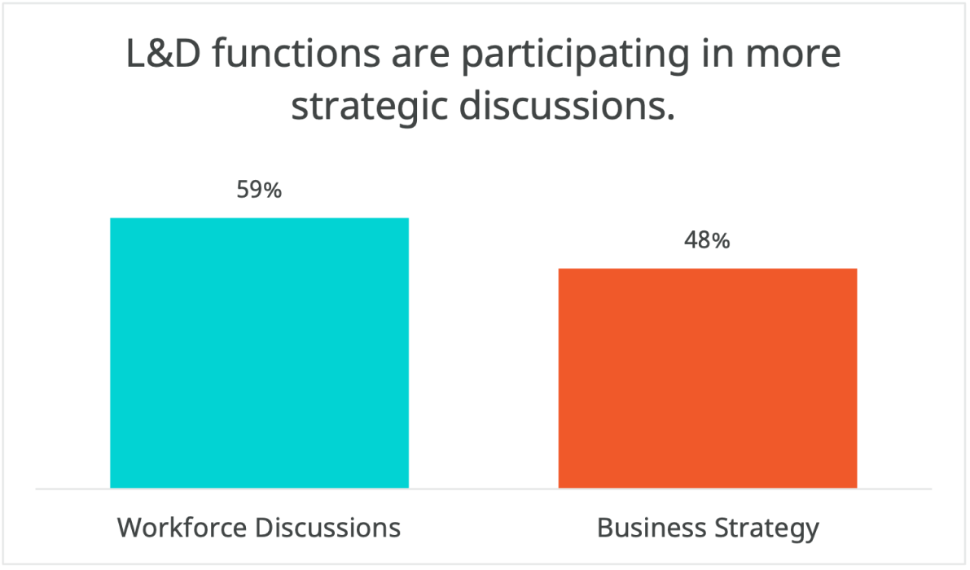
Additionally, according to Glint's 2021 Employee Well-Being Report, “Opportunities to learn and grow” is the most important driver for a great work culture, a stewardship owned by the L&D function. Employees expect more than page-turner courses or day-long events. And if we connect the dots, opportunities to learn and grow affect culture, productivity, engagement, and retention.
The problems L&D is tackling—upskilling, agile workforces, mobility, work culture—aren’t small. They’re big and important and relevant, which is both a blessing and a curse. L&D has been seeking a “seat at the table” for years. They finally, undeniably, have one. The question now is, do they have the skills they need to do something at that table?
Learning and Development Skills
We want to start by acknowledging that some good work has been done to identify skills L&D pros need. Of note are LPI, ATD, and Training Industry, all of which have capability models outlining L&D skills.
Our intent with this research was not to create another capability model. Instead, we are interested in the skills that L&D pros in high-performing organizations think they will need to focus on developing to meet near-future needs.
All the Skills
To avoid bias (and to make our lives harder), we asked 300 L&D pros the following open-ended question:
What are the top 3 skills you feel L&D functions will need for the future?
We coded their answers, combining those that were similar, and grouped them into larger skills groups.
In all, L&D pros identified 39 skills. These skills were then categorized into 7 skill groups. The graphic below shows the relational focus of these skills and groups. The larger the bubble, the more L&D pros mentioned the skill. The percentages represent the percentage of the total number of skills mentioned that fall into each category.
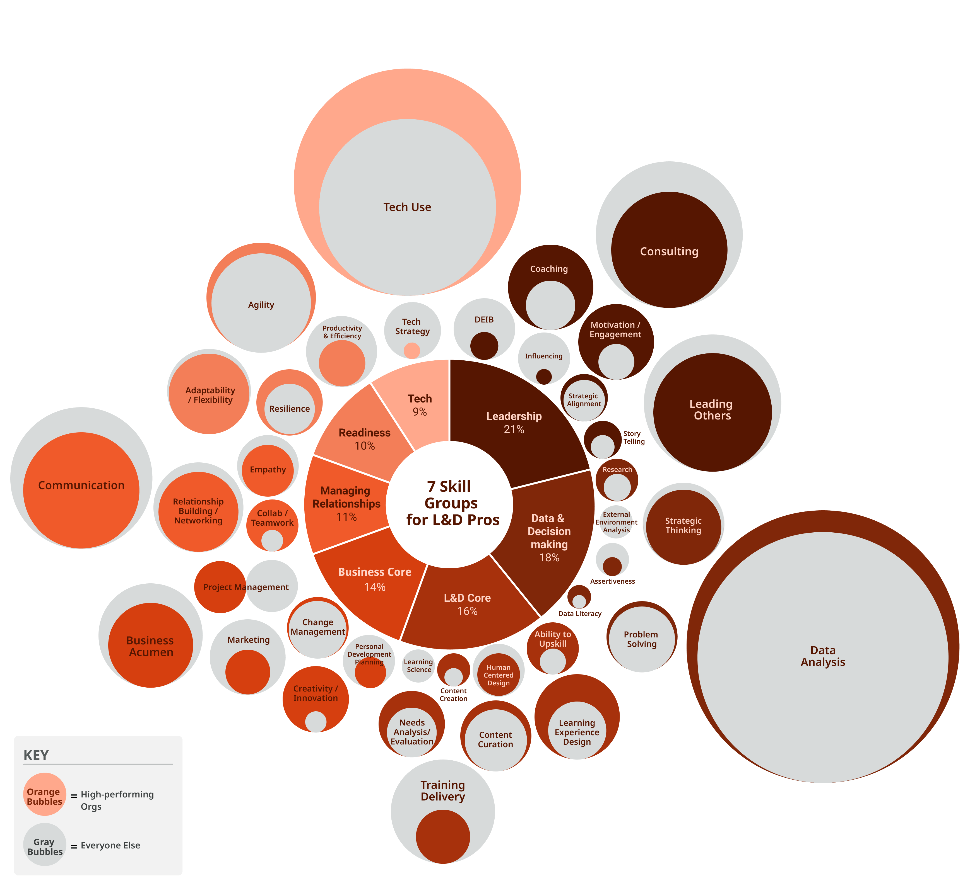
Figure 2: L&D Skills for the Future n=641. Colored bubbles = high-performing orgs; Gray bubbles = Everyone else. | RedThread Research, 2022
Click graphic to enlarge, or see our infographic for this study.
The skills identified by L&D pros were varied and nuanced. They give some insight into the kinds of challenges L&D pros and functions may be facing.
In fact, in looking at the names of the larger skills groups, we see many indications that L&D’s influence is expanding, as its responsibility:
- Leadership: skills to lead inside and outside the L&D function
- Data & Decision-making: skills to use data for making better decisions
- L&D Core: skills to build the capabilities of the workforce
- Business Core: skills to understand and align with business strategy
- Managing Relationships: skills to build and maintain relationships, internal and external to the L&D function
- Readiness: skills to help individuals and functions readily adapt to changing environments
- Tech: skills to leverage tech to upskill the workforce
This data—the skills identified by L&D pros—tells us that L&D pros need to be more than just instructional designers. They need to know much more than just adult learning theory. In this day and age, and particularly at this very strange moment in history, they need to be entrenched in the organization.
At the same time, we know that focusing on building all the skills will lead to focusing on none of them. Understanding the 39 skills L&D pros think they need is only the first step.
Understanding the ones they actually need is the next.
Skills in High-performing Organizations
Determining which skills L&D people need is an inexact art. The existing literature bases skills recommendations on expert opinion, asking L&D pros and thought leaders what challenges – and skills – L&D professionals will need next.
We took a slightly different tack. Instead of asking experts, we looked at the data L&D pros provided about the skills they thought they needed for the future. We then asked them how their organizations were performing, using these 4 measures:
- Met or exceeded its business goals for the last three years
- Responds quickly to marketplace changes
- Innovates faster than its competitors do
- Customers are more satisfied than its competitors’ customers
We then combined these 4 measures into one score and assigned that score to each L&D pro that gave us data on skills. Finally, we identified those L&D pros with scores in the top 25% to determine which were associated with high-performing organizations.
Finally, we compared the skills that L&D pros in high-performing organizations were focusing on with the ones L&D pros in other organizations named. The results, shown in Figure 3, revealed some interesting differences.
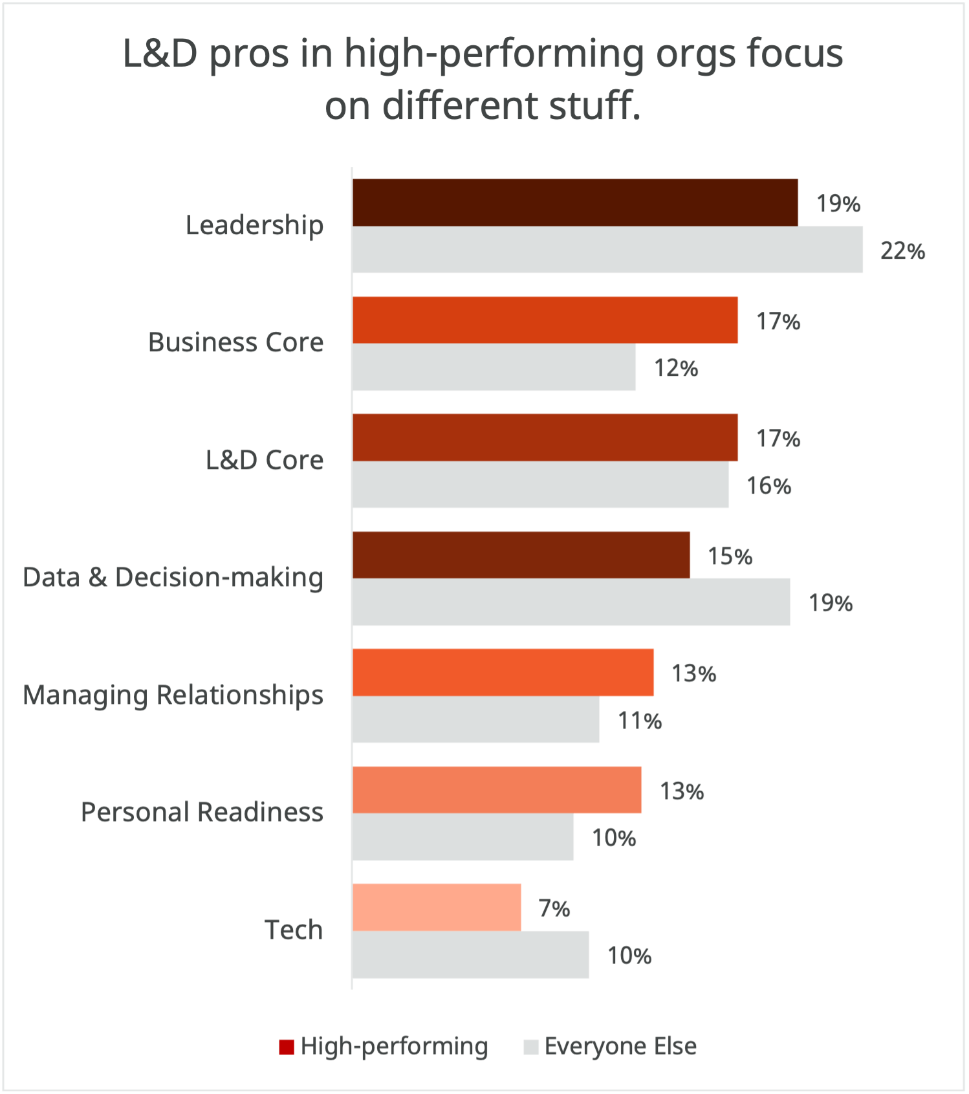
Figure 3: Focus on Skills, L&D Pros in High-performing Organizations vs. L&D pros in other organizations n=641|RedThread Research, 2022
The results got even more interesting when we combined our observations from this data with the insights we gathered from interviews and our roundtable.
Four differences stood out to us. L&D pros in high-performing organizations likely:
Are already focusing on leadership skills
We know that L&D pros in high-performing organizations participate in workforce and strategy discussions significantly more than their counterparts in other organizations.
So while it may look like L&D pros in other organizations are more focused on Leadership skills than those in high-performing organizations, it's likely because they perceive those skills as a need. L&D pros in high-performing organizations have likely already acquired them.
Have already built data into their decision-making process
Anecdotally, higher-performing organizations are more attuned to Data and do more information-gathering, and it is more ingrained in the way they currently operate. Other L&D pros may not have developed these competencies or the systems to support them in their work, resulting in a higher recognition of the need to meet future (or current) needs.
See connecting their work to the business strategy as key
L&D pros in high-performing organizations focus significantly more on Business Core skills. Both the quantitative data and the data collected from our interviews and roundtables indicate that L&D pros in high-performing organizations tend to draw more explicit connections between what they do and the goals and strategy of the organization. They also tend to have a deeper understanding of the business goals, and they tend to make decisions based on those goals.
Focus on relationships more than their counterparts do
Finally, as we'll see throughout this report, L&D pros in high-performing organizations tend to focus more on relationships.
High-performing organizations tend to have L&D pros who understand their place in the larger ecosystem and value their relationships with other functions.
These 4 broad differences can give us high-level insight into where L&D pros may want to focus. However, the devil, as they say, is often in the details.
We also saw differences among the 39 individual skills between L&D pros in high-performing organizations and their counterparts in other organizations.
The Skills Groups
In the following sections, we’ll provide more information about each of the 7 skills groups, including the individual skills within each. Our goal is to explore why each group and their respective skills may be important at this point in history.
We’re also interested in the blind spots—the places where L&D functions may be over- or under-emphasizing certain skills. To determine what those blind spots may be, we compare the skills that L&D pros are focusing on in high-performing organizations with other L&D pros may be focusing on.
Leadership
L&D pros view their own leadership skills as the most important group of skills for the future. Twenty-one percent of all skills mentioned fell within this category.
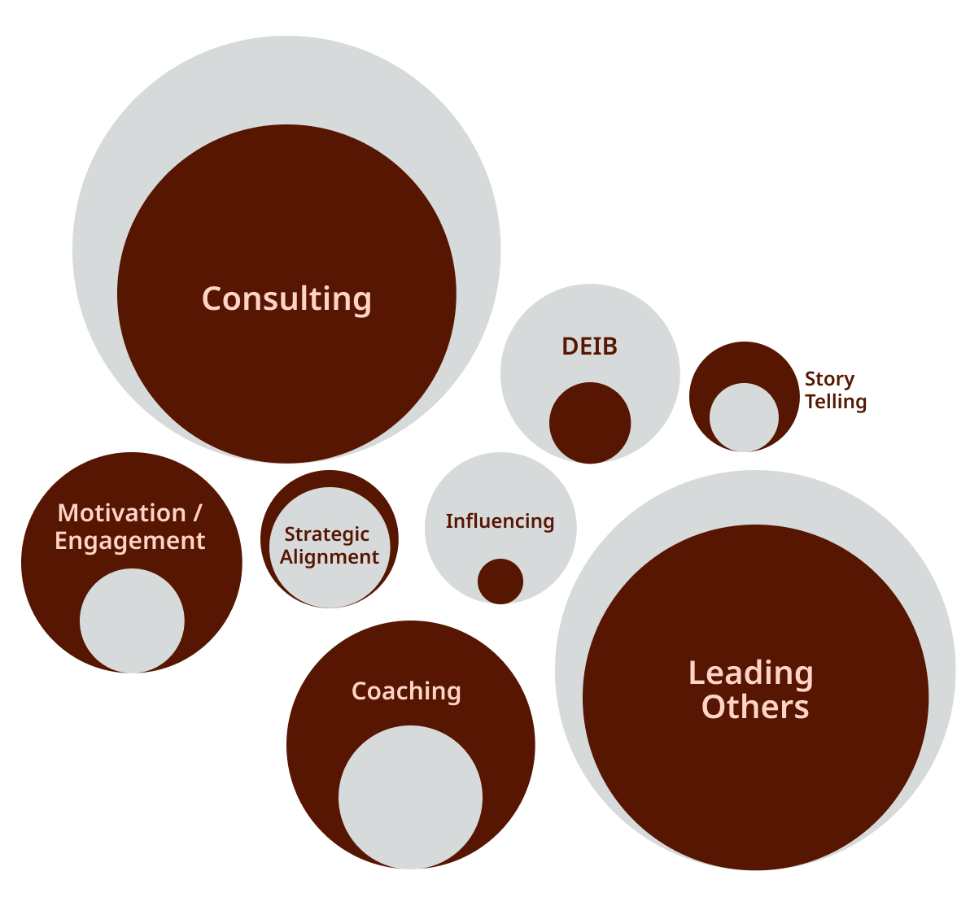
Figure 4: Leadership skills groups, n=136| RedThread Research, 2022
That 21%, validated by our interviews, are indicators of the breadth of leadership responsibilities L&D pros currently have. Kirsten Jackson, a Director of Leadership Development, told us:
We’ve really done a lot of work in the last couple of years to make sure L&D has a seat at every table—tables at the business function level to understand development needs, but also tables at the enterprise level to understand leadership expectations, goals, and how L&D can support them.
But it isn’t just these significant initiatives that L&D pros find themselves leading. In our research, we found that a lot of L&D functions are becoming much more strategic and intentional about employee development. They offer more learning methods and integrate more development opportunities into the workplace than in the past.
These changes from reactive to proactive, from just-in-case to just-in-time, and from learn-in-a-classroom to learn everywhere, require L&D functions to change the hearts and minds of business leaders and employees alike. Leadership skills like consulting, coaching, and motivation and engagement ensure that L&D professionals will be able to make these adjustments.
Leadership: Blind Spots
These findings don’t constitute hard and fast recommendations. Each L&D function should consider all of the variables – internal and external, that may affect the skills they need. That But we did identify some areas that may be getting either too much focus or not enough from the L&D professional population as a whole.
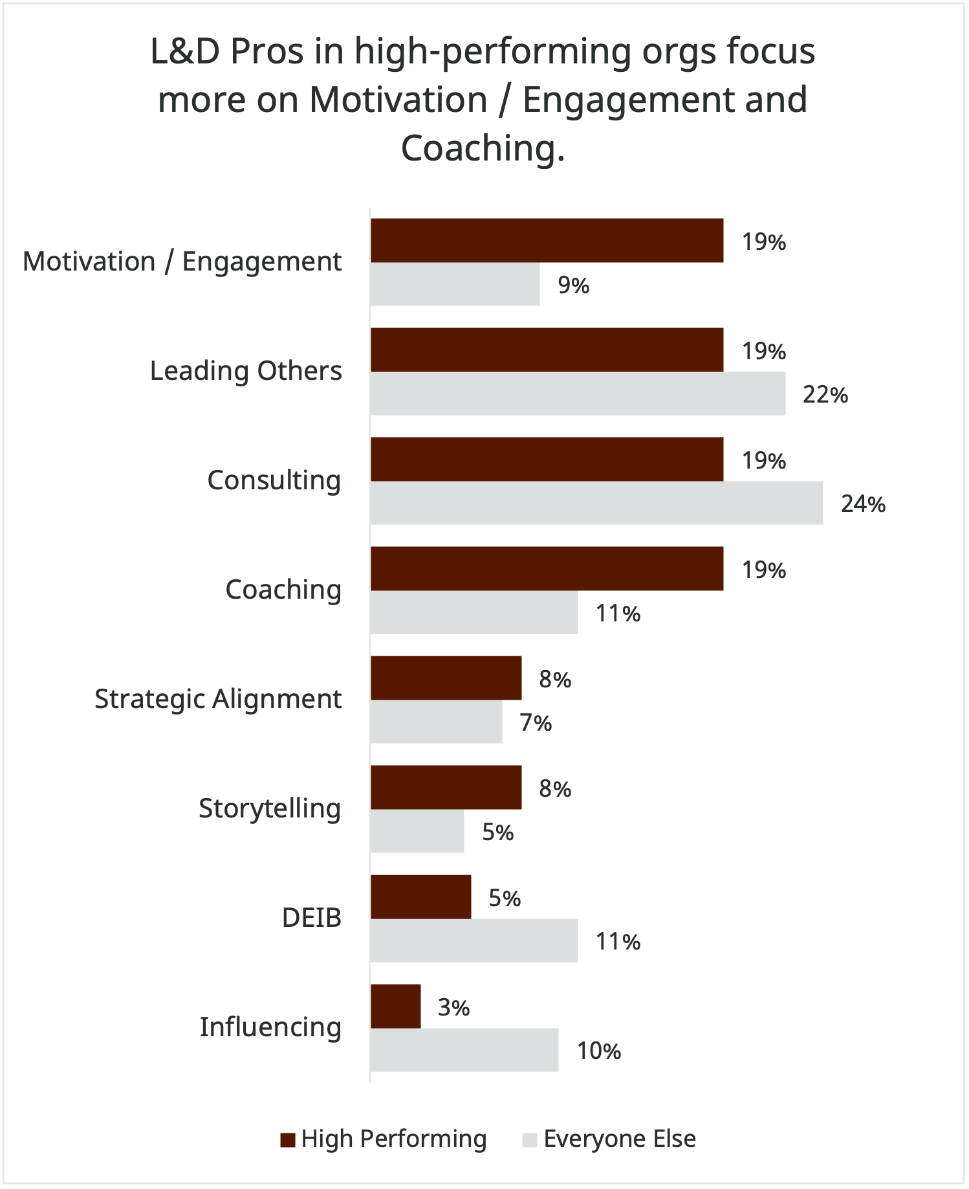
Figure 5: Leadership skills focus, L&D pros in high-performing orgs vs. L&D pros in other orgs, n=136 | RedThread Research, 2022
Focus more on Coaching, Motivation & Engagement, and DEIB
L&D pros in high-performing organizations focus almost twice as much on Coaching and Motivation & Engagement as their counterparts in other organizations.
We have observed that organizations, particularly those adopting hybrid and remote practices, are continuing to look for ways to connect and engage with employees. A stronger focus on Coaching and Motivation & Engagement can help organizations build those connections into their development practices.
Gina Montefusco, Associate Director of L&D, at United Healthcare Group, sees Coaching as a crucial skill for internal L&D leadership as well as external consulting:
Coaching is super important. You can use it to understand your business better and be more comfortable asking questions. I do think that my coaching experience has made me a better consultant overall, because now I ask questions differently.
In our 2022 yearly trends report, we mention that the human is becoming more critical. The fact that L&D pros in high-performing organizations are focusing on skills that further that mission is not lost on us.
We would also be remiss if we didn’t mention the abysmal showing for DEIB skills. While we are happy that this skill showed up at all, the percentage of L&D pros that mentioned it is pretty low. And it's even lower among L&D pros in high-performing organizations.
LinkedIn Learning’s 2022 Workplace Learning Report says that 55% of L&D functions own or share responsibility for DEIB initiatives. L&D pros should be building these skills and looking for opportunities to align their work with DEIB initiatives.
Focus on a broader set of Leadership skills
L&D pros in high-performing organizations tend to focus more evenly across key leadership skills while L&D pros in other organizations tend to focus quite heavily on just some of them.
This uneven focus may mean that L&D pros are putting too much focus on some while ignoring others. For example, L&D pros in other organizations focus more on Consulting (6 percentage points more) and Influencing (7 percentage points more) than those in high-performing organizations.
This focus on specific skills may be key to being effective in their particular organizations, but L&D pros should at least consider how they’re spending their development time and money, and what those skills can get them.
Data & Decision-making
Within Data & Decision-making, the top skill mentioned by L&D pros was Data Analysis. In general, we think that a focus on data skills is good, and it has been missing from most L&D functions for years.
We grouped Data Analysis with other skills used to make better decisions, as Data Analysis is a tool rather than an end unto itself. To be useful, Data Analysis must necessarily be tied to questions, which are ultimately tied to decisions. Other skills in this group are highlighted in Figure 6 below.
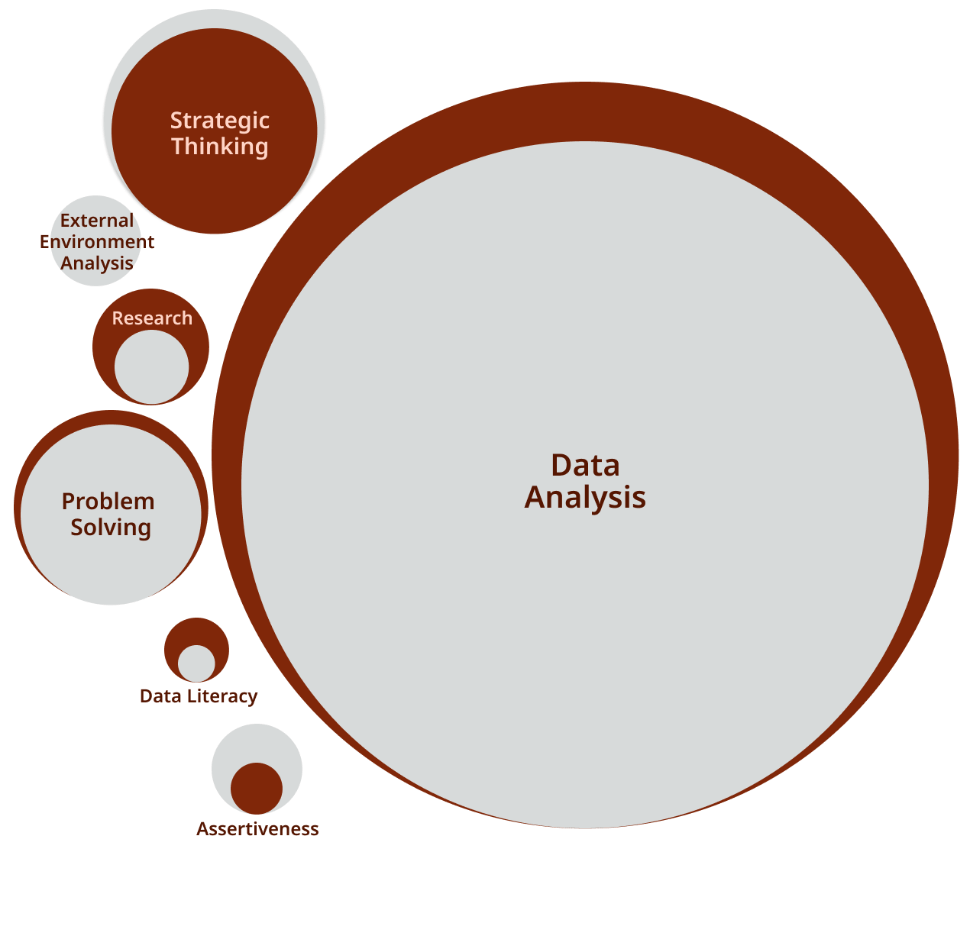
Figure 6: Data & Decision-making skills group – % of focus on each skill, n=113 | RedThread Research, 2022
As L&D pros take active roles in bigger, more strategic conversations, the need for skill in Data Analysis grows. One L&D leader mentioned that data was a language that businesses speak. Data Analysis is crucial for L&D pros as they try to identify the skills organizations and individuals need and then identify experiences that will help them grow those skills.
Many leaders mentioned that they’re looking more deeply at LMS, LXP, and other learning data to understand what their users need. Some have also started to analyze data outside of L&D. Another L&D leader, for example, looks at engagement data:
We look at data from many sources. So, for example, we look at employee engagement scores—questions like, “Do you feel supported by your manager?” This data helps us understand what our leaders will need in the future.
It’s great that L&D is focused on data. Where it gets tricky is how “data” is defined and what other sources L&D pros should be considering, which brings us to a blind spot for Data & Decision-making.
Data & Decision-making: Blind Spots
While L&D pros have started to focus on leveraging data for decision-making, they may be failing to develop other skills that could help them make sounder decisions. And by the way, this is true for all L&D pros. In this case, there was no significant difference for those in high-performing organizations.
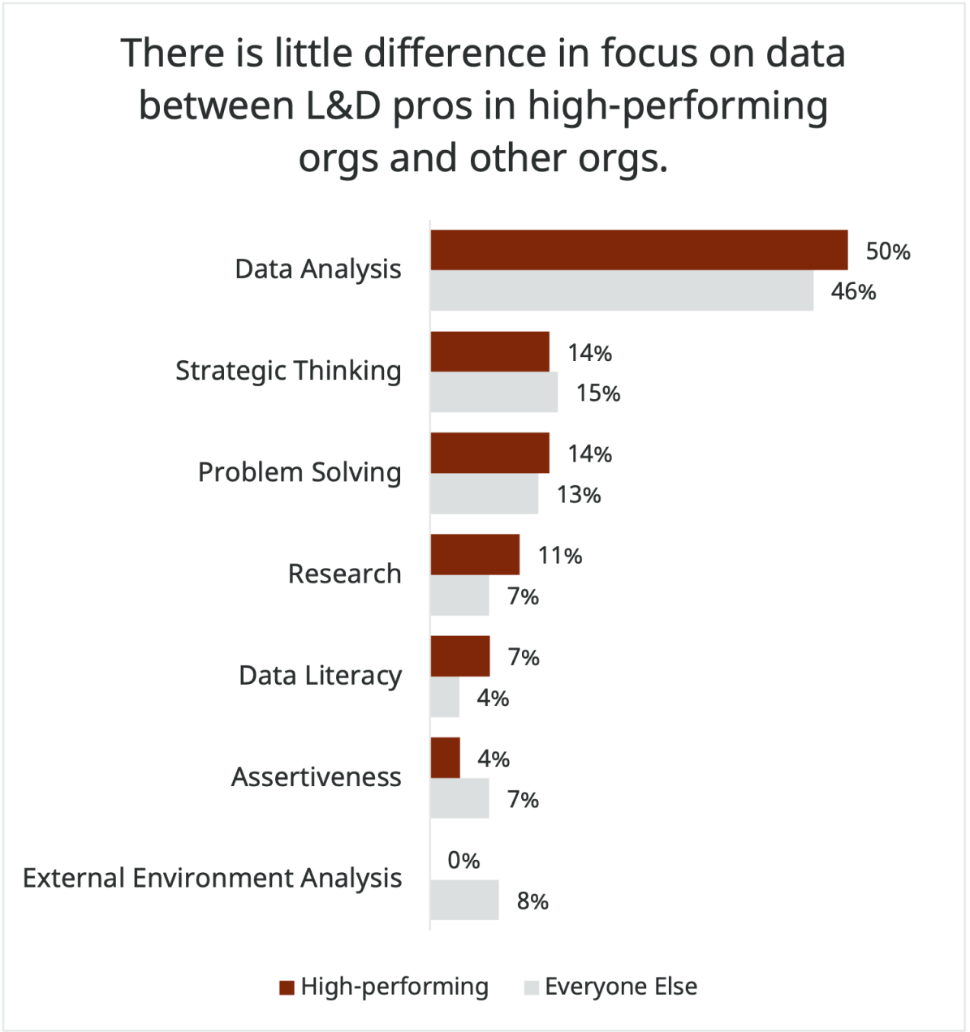
Figure 7: Data & Decision-making skills focus, L&D pros in high-performing orgs vs. L&D pros in other orgs, n=113 | RedThread Research, 2022
Focus more on different data-gathering skills
Data-gathering skills include External Environment Analysis, Data Literacy, and Research. These activities may not always result in hard numbers, but many of the insights they yield can be key to better decisions. Not all data is quantifiable. Trust us. We're researchers.
Focus more on decision-making skills
Problem-solving and Strategic Thinking fall within this subcategory. Frankly, we’re a little surprised we didn’t hear more about them. As L&D pros exercise these skills, they’ll likely see more possibilities and solutions.
So, to sum up: L&D pros recognize the need for better decision-making. And they recognize that Data Analysis skills are a big part of that. But they shouldn’t develop these skills at the expense of other underdeveloped skills.
L&D Core
Not surprisingly, L&D Core is important to L&D pros. Several pros pointed out the importance of these skills to their job and, if they were a leader, their employees’ jobs.
And rightly so: L&D pros bring an essential and unique skill set—one that no other group has—to help organizations solve the development challenges they face.
Learning Experience Design and Training Delivery top the list of skills L&D pros feel they need in the L&D core skills group.
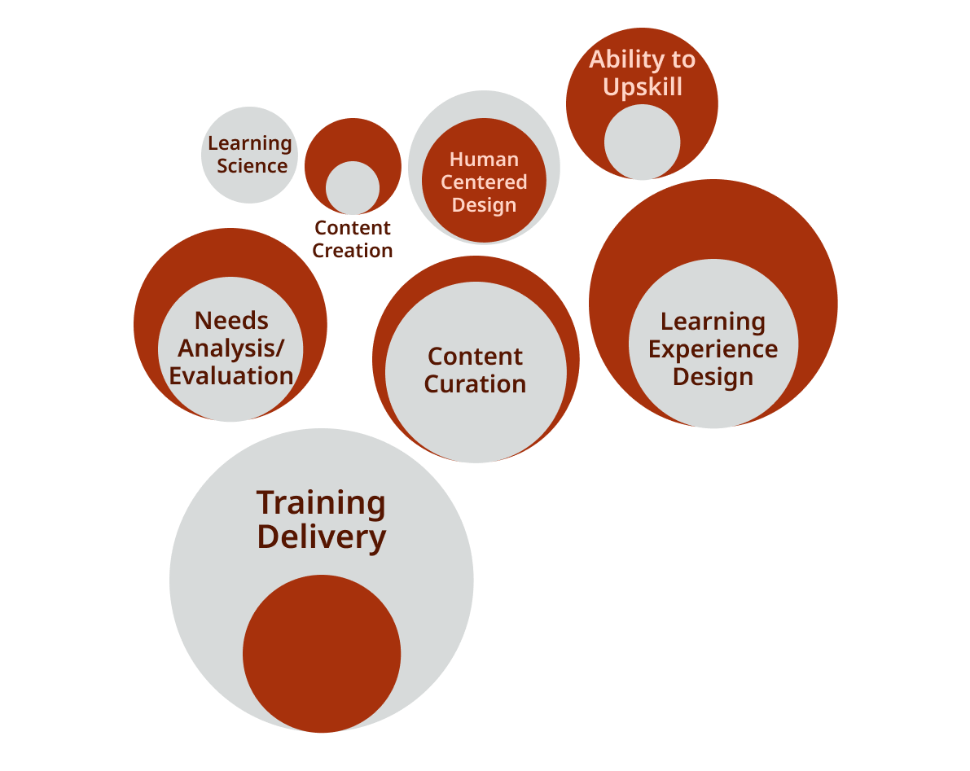
Figure 8: L&D Core skills group – % of focus on each skill, n=105 | RedThread Research, 2022
Training Delivery and Learning Experience Design top the list of essential skills in L&D Core. This is not surprising, given that many L&D pros get degrees and certifications in these skills, and have based their careers on their application.
However, what was surprising was the number of other skills that popped up in this skills group. Human-Centered Design, for example, or the Ability to Upskill, have been recognized only relatively recently as skills that L&D pros need.
Another unsurprising but still growing skill was Content Curation. Its relative prominence hints that L&D pros understand that their responsibilities go much further than creating a course. It may have more to do with assembling the right information and creating the right context and experience.
When we talked to L&D pros about the skills they need specific to L&D, we heard traditional answers, but with a twist. For example, where Training Delivery used to be all about facilitating classroom initiatives, L&D pros mentioned new methods used to “deliver” learning, including coaching, stretch assignments, and external content.
L&D leaders are also looking for broader skill sets when it comes to L&D Core. Ryan Cozens, Learning & Development Lead, Well Health, said:
I think instructional design is an important skill, but it can’t be the only skill. There have to be mindsets and behaviors tied to that. I’m not just looking for someone with the ability to design really incredible self-directed asynchronous learning; I’m looking for someone who understands and can see the bigger picture.
Indeed, L&D Core skills are changing. L&D pros are looking at traditional skills differently, and they're introducing new ones for the future.
L&D Core: Blind Spots
L&D Core skills were the 3rd most important group of skills identified by the L&D pros we surveyed. But, as we saw above, when we look at the focus of L&D pros in high-performing organizations versus those in other organizations, we see they rated L&D Core skills at the same level as Business Core.
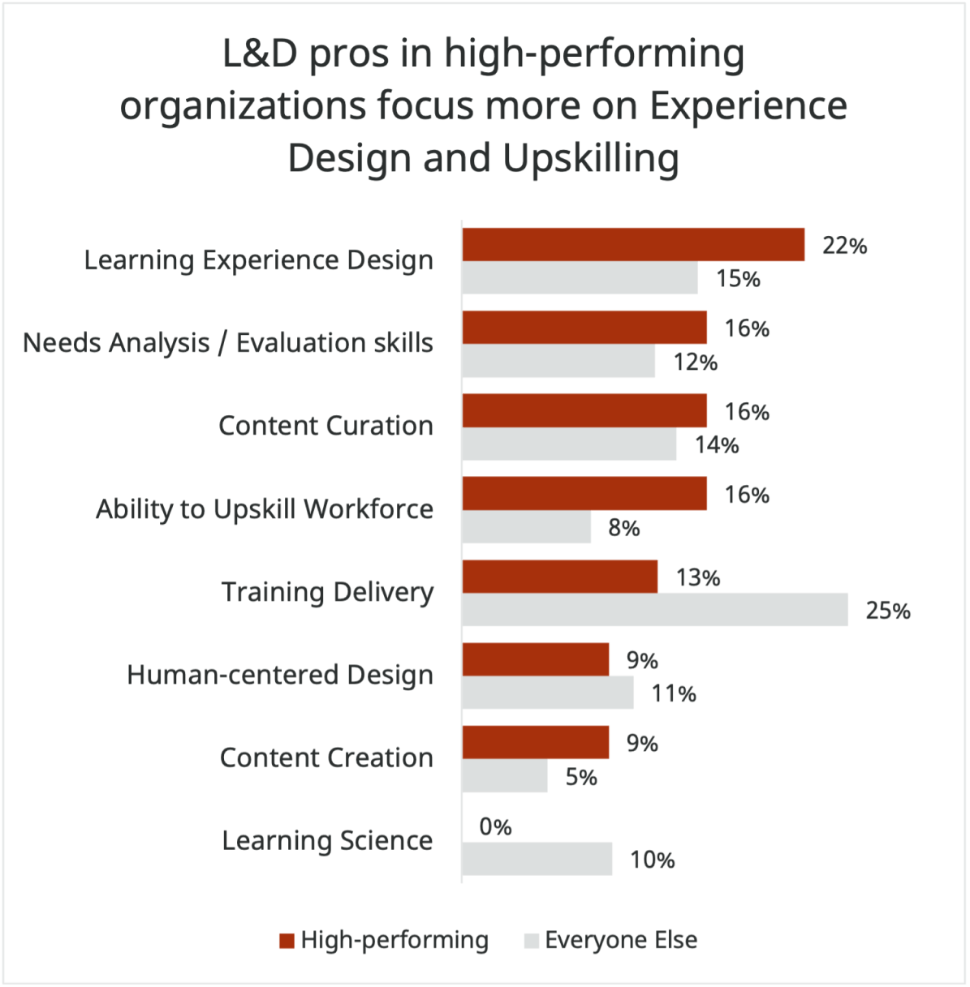
Figure 9: L&D Core skills focus, L&D pros in high-performing orgs vs. L&D pros in other orgs, n=105| RedThread Research, 2022
That Business Core and L&D Core are considered equally important is telling. It indicates that L&D in high-performing organizations are likely more aligned to and focused on business challenges than more traditional L&D functions.
There are also some key differences between the particular focuses of L&D pros from high-performing organizations focus and those in other organizations. Two caught our eye.
Focus more on Experience Design and Upskilling the Workforce
First, L&D pros in high-performing organizations focus more on Learning Experience Design (7 percentage points more) and Upskilling the Workforce (8 percentage points more) than their counterparts in other organizations.
These differences might indicate that L&D pros in high-performing organizations are more attuned to the entire experience of learning and ensuring that the workforce has the right skills. This, in concert with the other skills they find essential, may indicate a more holistic, intentional approach to learning in general.
Focus less on Training Delivery and Learning Science
This brings us to the second big difference. L&D pros in high-performing organizations focused significantly less on Training Delivery (12 percentage points less). While Training Delivery was the most important skill in L&D Core for L&D pros in other organizations, it was 5th out of 8 skills for those in high-performing organizations.
Likewise, while L&D pros mentioned Learning Science as a skill they thought they needed for the future, not one L&D professional in a high-performing organization mentioned it. Does this mean Learning Science is not necessary? Absolutely not. But it does mean that L&D functions that focus too heavily on traditional learning science, without considering the new context (technology, mindsets, motivations, etc.), may not be using their L&D development time or dollars in the best way.
Business Core
Increasingly, L&D pros consider themselves a part of the business rather than an entity that serves the business. This idea came through loud and clear in the research: L&D pros identified skills that are necessary for collaborating with other business functions.
Business Acumen and Marketing top the list for important Business Core skills, according to L&D pros.
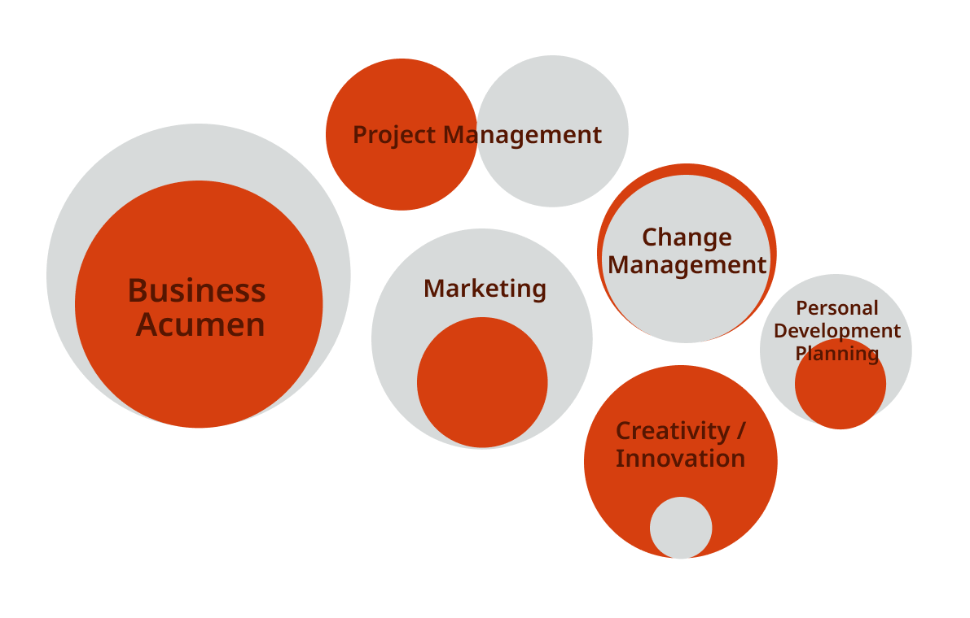
Figure 10: Business Core skills group – % of focus on each skill, n=87 | RedThread Research, 2022
Figure 10: Business Core skills group – % of focus on each skill, n=87 | RedThread Research, 2022
Among the skills mentioned in the research, Business Acumen topped the list. Leaders mentioned 3 aspects of Business Acumen.
Understanding organizational goals and strategy. L&D pros are more proactively evaluating their business direction and determining the best ways to build a skilled workforce than in previous years. Brandon Wolfram, HR Manager for Learning and Performance Solutions at SaskTel, put it this way:
We used to get more operational requests—things like, “Hey, we need some training on this topic,” or “Can you put something together on this.” Now, we get requests like, “Can you partner with us to solve this complex business challenge.
Understanding business basics. L&D functions are professionalizing. Many see themselves not as a traditional cost center but as a contributing member to business growth. As such, project management, change management, and their creativity and innovation muscles are increasingly important.
Speaking the same language. For years, L&D functions have embraced adult learning theory and the research surrounding it. While that is all good, leaders we spoke with understand the need to ditch wonky L&D terms in favor of vocabulary used more broadly.
Focusing on Business Core skills draws them into the business itself, erasing any invisible lines that may have kept them separate. These skills also make it easier to participate in larger strategic discussions.
Business Core: Blind Spots
The blind spots that L&D pros may have around this skills group come down to 2 individual skills.
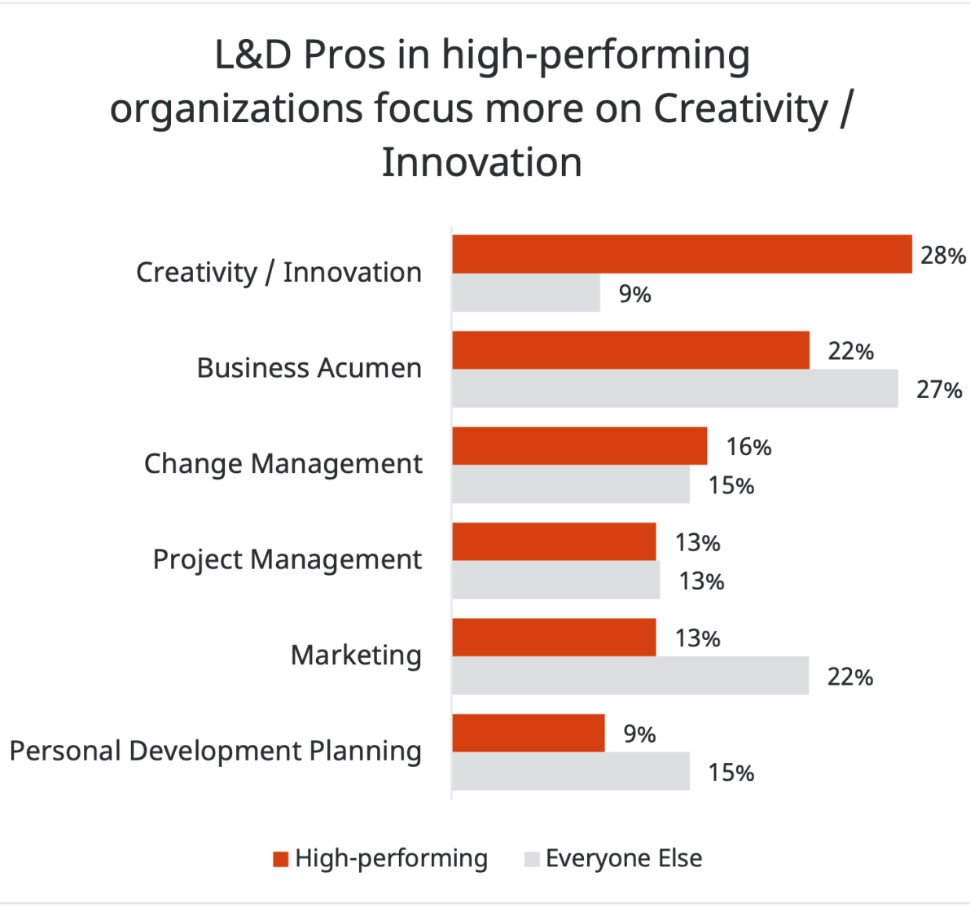
Figure 11: Business Core skills group – Focus of L&D pros in high-performing organizations vs L&D pros in other organizations. n=87 | RedThread Research, 2022
Focus more on Creativity & Innovation
First, L&D pros in high-performing organizations focus significantly more (19 percentage points more) on Creativity and Innovation than their counterparts in other organizations.
The importance of this focus in high-performing organizations aligns with what we heard from learning leaders in our interviews and roundtables. Drew Goodrich, the Director of Learning Enablement at Intuit, spoke about the importance of Creativity & Innovation for his team:
Let's get inspired by anything that’s working and done well and takes hold and gets people to do things. That's a lot more creative than just standing up PowerPoint slides or doing a breakout session—let’s get creative.
L&D pros in high-performing organizations are less likely to worship the status quo. They tend to focus on finding creative solutions to business challenges and taking more risks.
Focus less on Marketing (courses)
L&D professionals in high-performing organizations and their peers in other organizations also focus differently on Marketing.
Marketing, in this case, refers to using marketing techniques to encourage employees to participate in learning interventions. While L&D professionals in general seem to see this as a critical skill, L&D professionals in high-performing organizations were not as interested (9 percentage points less).
While it's beneficial for L&D, focusing too heavily on Marketing may indicate a fairly traditional approach to learning: “If you create an awesome course and market it the right way, they will come.”
That L&D pros in high-performing organizations are focusing so much more on Creativity & Innovation indicates that they may also be broadening their views of learning, including methods that may not be as easily “marketed” in the traditional sense.
This means that L&D pros should likely broaden “marketing” to include strategies that make all learning opportunities “discoverable.”
Managing Relationships
Several skills mentioned by L&D pros had to do with building and managing relationships. We grouped these skills into the larger skills group, Managing Relationships.
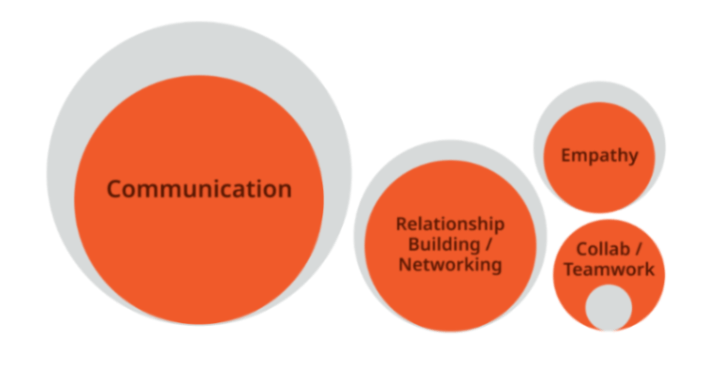
Figure 12: Managing Relationships skills group – % of focus on each skill, n=73 | RedThread Research, 2022
L&D pros who spoke with us in the roundtable and in interviews identified 3 areas where they found managing relationships crucial.
First, L&D pros found it necessary to manage the organization's relationship with L&D. Learning is an entirely voluntary activity—you can force someone to complete an e-learning course, but you can’t force them to learn the content.
L&D pros spoke of developing trust with the organization —communicating the benefits of consistent development and empathizing with employees when creating and delivering initiatives. One leader emphasized the importance of listening as a part of communication:
I think the hardest part is hearing. Not just hearing enough to fall in love with the problem, but hearing enough to solve the problem. And then creating.
Second, L&D pros increasingly see their networks and relationships with others in the organization as the key to their success. Some mentioned these relationships in the context of understanding key aspects of the business in order to meet their development needs. Others mentioned these relationships as crucial to getting things done. Relationships were crucial for tasks from understanding who to speak to in procurement to identifying the strongest SME for a specific project. Another leader said:
I’m a big believer in networking: getting to know lots of different people, and not getting too deeply dug into one particular discipline. Because if you do, you forget how all of these things are connected.
Finally, L&D pros also mentioned the need for Relationship-building and Networking as key to increasing their own knowledge and understanding. They also mentioned the need to identify the best ways to build those skills in the employee population at large.
Managing Relationships: Blind Spots
Consistent with our finding about Networking, we found that L&D pros across organizations place value on skills around Managing Relationships.
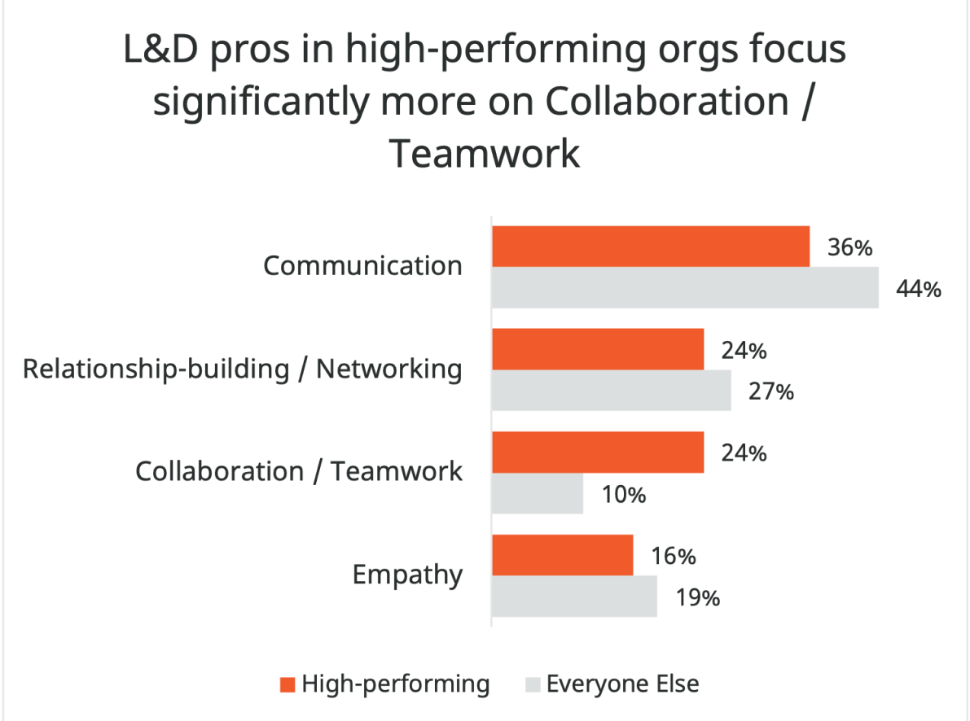
Figure 13: Managing Relationship skills focus – L&D pros in high-performing orgs vs. L&D pros in other orgs, n=73 | RedThread Research, 2022
Focus more on Collaboration & Teamwork
When we look at the focus on specific skills, however, there is a different story. Collaboration & Teamwork received significantly more attention (14 percentage points more) by L&D pros in high-performing organizations.
This focus indicates that L&D pros in these organizations realize that learning cannot just be the responsibility of the L&D function. It has to involve everyone in the organization. Drew Goodrich at Intuit says they leverage collaboration to help with strategy:
It's good there’s a lot of teamwork and collaboration and co-creation and co-planning. Getting everyone involved and getting everybody’s hands on it means you’ll actually stick to your strategy.
In essence, part of L&D's job is to deputize the organization – get everyone on the same page and build cross-functional systems that support a learning culture. That can only be done through carefully managing relationships.
Readiness
When asked, 10% of L&D pros identified Readiness skills as necessary for the future. Readiness skills are those universal skills that allow L&D functions to do their jobs in ever-changing, often chaotic circumstances. L&D pros recognized 4 skills within that category.

Figure 14: Readiness skills group – % of focus on each skill, n=67; note: n=24 for L&D pros in high-performing organizations | RedThread Research, 2022
The past couple of years have required significant change for most organizations. That need has also trickled down to L&D functions. They have had to adapt many traditional training methods to serve hybrid and remote employees. They are also being tasked with leading initiatives such as DEIB or Return to Office (likely more than once).
These changes are forcing L&D pros to be more adaptable, agile, resilient, and efficient.
The Readiness skill group the majority of them spoke of them as capabilities needed by the L&D function, not necessarily the individual. Many talked about changing mindsets, systems, and processes to make the function itself more adaptable and agile.
For example, L&D leaders mentioned they were doing things like:
- Moving away from traditional waterfall development processes and toward agile approaches, because waterfall slowed them down too much
- Recognizing the perishable nature of learning and encouraging L&D pros not to fall in love with any one solution. Thinking instead of the lifecycle of the solution and put into place evaluation triggers and plans for sunsetting or replacing them
- Adapting to immediate needs versus making sure that something is 100% perfect before launching
- Experimenting and taking risks, gathering data, and adjusting as they go instead of only measuring at the end
One leader summed up all of these ideas as she described how her L&D function was becoming more nimble:
We need to be OK with putting something out there that isn’t 100% polished, because we need to move fast. Then we see what happens. Then we need to gather feedback and adjust.
The funny thing is, we’ve been paying lip service to these skills for years. But recently, probably prompted by external events, L&D pros are doing more than just talking about them.
Readiness: Blind Spots
L&D pros from all organizations put the greatest focus on Agility in this category. They also agree that Adaptability & Flexibility are important skills. But then we see some differences.
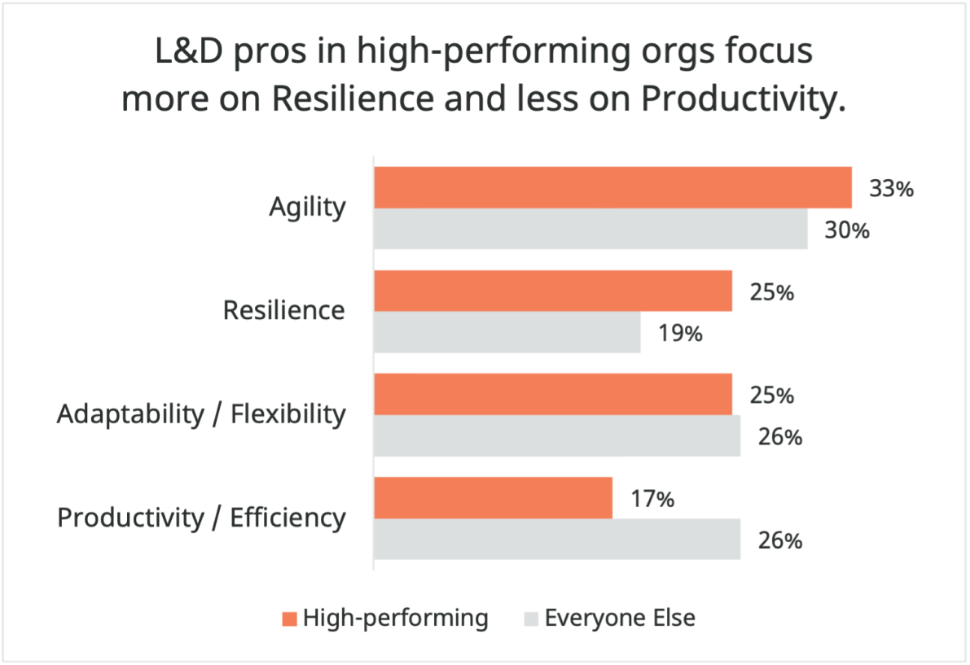
Figure 15: Readiness skills focus, L&D pros in high-performing orgs vs. L&D pros in other orgs, n=67; note: n=24 for L&D pros in high-performing organizations | RedThread Research, 2022
Focus more on Resilience
L&D pros in high-performing organizations focus on Resilience more than their peers in other organizations (7 percentage points more). The 2011 journal article “What Is Resilience?” describes Resilience as positive adaption, or the ability to maintain or regain mental health.
From our interviews and roundtable discussions, we learned that L&D leaders are looking at Resilience in 2 ways.
First, L&D leaders recognize the changes their own functions have encountered recently and understand that Resilience is key to quick adaptation.
Second, L&D pro are considering how Resilience can be taught, encouraged, and systematized within their organization so that their workforce can handle future changes and disruptions.
Focus less on Efficiency & Productivity
Interestingly, L&D pros in high-performing organizations tend to focus significantly less on Efficiency and Productivity (9 percentage points less). We’re fans of efficiency, and we think all L&D functions should strive to be more efficient and productive. But we also know that change is often messy, requiring inefficiencies and experimentation to find new and better ways of doing things.
The combination of these 2 things—greater focus on resilience and less on efficiency—likely lead to more experimental and risk-friendly environments.
L&D functions may want to consider how much respective focus they put on Resilience and learning from mistakes versus institutionalization and standardization.
Tech
Finally, Tech. Nine percent of L&D pros mentioned Tech skills when determining which skills will be needed for the Tech plays a pretty important role in the work of L&D pros, and that role appears to have been magnified as organizations were forced to adopt remote and hybrid work models.
Even before the pandemic, however, L&D pros saw tech as a way to engage, scale, personalize, evaluate, and quantify learning. Organizations had also started to move toward a digital mindset. As organizations have begun to adopt skills a skills mindset, tech has only become more critical.
L&D pros identified tech skills in basically 2 flavors, as shown in Figure 16.
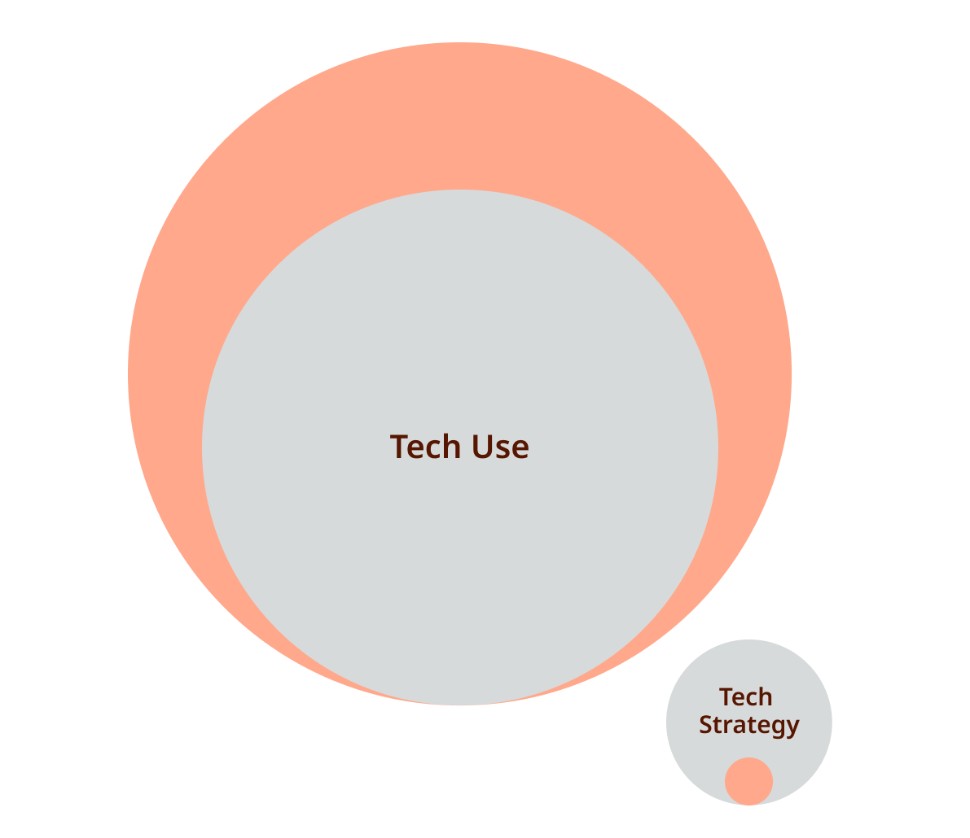
Figure 16: Tech skills group – % of focus on each skill, n=60; note: n=14 for L&D pros in high-performing organizations | RedThread Research, 2022
L&D pros overwhelmingly identified skills related to using tech more effectively in their roles. In fact, Tech Use was the second most mentioned skill overall—second only to Data Analysis. However, we want to note some nuances in the interviews that we feel are important.
First, L&D pros mentioned that as their organizations have fully embraced hybrid and remote work, many employees lack the skills necessary to work in these environments effectively. Karen Dowdall-Sanford, Senior Director of L&D at Flyhomes put it like this:
Once again, there’s a skill set specific to virtual collaboration and how you use Teams or Slack effectively. There’s the technical skill set of just understanding the tool, but then there are also norms and practices and behaviors that run into how to do it effectively.
L&D pros appear to understand that they need skills to help others develop skills in virtual collaboration—something we think we’ll see more of.
Second, some L&D pros mentioned 2 skill sets that fall under tech use. First, a skill set needed to use the tech effectively. Second, a skill set associated with creating the right environment around that tech. Tech that doesn’t integrate with the organization doesn’t work. Mitchel McNair, Global Learning & Career Consultant at Dow, said it like this:
We’re doing some things in technology, but the huge technology piece is probably the easiest piece. The bigger challenge is the culture and processes and L&D work design.
The other piece of the Tech skills group is Tech Strategy. Tech Strategy focuses less on the skills needed to use individual technologies and more on how the technologies work together to create the experience.
Tech Strategy often involves tech outside of the L&D function, such as tech that is leveraged from other business functions. (Teams and Slack are good examples).
A strong tech strategy also identifies places of intersection with other business tech and ensures that the learning tech roadmap aligns with the vision of the larger organization.
Tech: Blind Spots
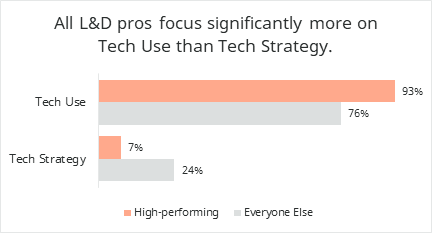
Figure 17: Tech skills focus, L&D pros in high-performing orgs vs. L&D pros in other orgs, n=60 note: n=14 for L&D pros in high-performing organizations | RedThread Research, 2022
Focus more on Tech Strategy
None of our research indicated much difference between the focus of L&D pros in high-performing organizations versus those in other organizations. All L&D pros focused heavily on Tech Use.
Frankly, we wish we had an explanation for this, as we expected to find the opposite. However, it looks like high-performing organizations are still, as are most talented L&D pros, thinking about what the tech can do and less about how it fits together.
Therefore, the blind spot associated with technology is common to all L&D pros, regardless of their organization’s performance. All L&D pros should focus more time and effort on creating the experience, including determining how technology pieces fit together, the overall technology strategy, and how it aligns with the organization’s tech strategy.
Wrap Up: Upskill, L&D
Undoubtedly, organizations are focusing on upskilling their workforces. And, undoubtedly, L&D pros have a big role to play in that effort. Exciting times are ahead, but L&D pros need to be prepared.
To use a well-known metaphor, L&D pros are sitting in an airplane experiencing some turbulence. The oxygen masks have dropped, and L&D needs to take the time to put theirs on first before ensuring that employees get theirs on as well.
So upskill, L&D. We learned a lot in this study about where L&D pros should focus their efforts. Knowing is half the battle. The other half – making the time and actually doing the development – is the harder part, but we think crucial to the continued efficacy of L&D functions everywhere.
Note: for Appendices, including skills definitions, study demographics, research methodology, and contributors please download the PDF report.
Quick Summary: DEIB Metrics
Posted on Monday, March 7th, 2022 at 6:21 PM
Organizations need to show that they are making good, or some level of progress, on their diversity, equity, inclusion, and belonging (DEIB) commitments. While DEIB metrics are the obvious answer, how to select, collect, use, and maintain them is not so clear.
This infographic (click on the image below to get the full version) is a summary of our report DEIB Metrics: An Essential Guide.
As always, we’d love your feedback at [email protected]!
DEIB Metrics: An Essential Guide
Posted on Wednesday, February 9th, 2022 at 2:44 PM
Download This Report[/button]
Introduction
At this point, the business case for diversity, equity, inclusion, and belonging (DEIB) is clear. Our own research (see Figure 1) shows the relationship between having a strong DEIB culture, and critical individual and performance outcomes.1
Yet, for years, the representation of diverse populations in organizations improved almost imperceptibly.
Then we had a global pandemic and the rise of a social justice movement, sparked by the murder of George Floyd. Along with that came the heightened awareness that the pandemic was impacting diverse populations much more—particularly for women and people of color who were dropping out of the workforce at higher rates than other populations. As a result of this confluence of events, organizations began making big promises on DEIB in the summer of 2020.
When this happened, one of our first questions was how organizations would show that they’d made good—or at least made progress—on those commitments. While DEIB metrics measurements designed to understand DEIB—are the obvious answer, how to select, collect, use, and maintain those metrics is not so clear.
Thus, this research initiative on DEIB metrics and analytics was born. The first article in this series, “DEIB Analytics: A Guide to Why & How to Get Started,” provides leaders with a plan on how to begin using DEIB metrics and analytics. We’ve shared an 8-step guide with details on the actions and considerations that organizations need to take to effectively implement DEIB metrics.

Figure 1: The impact of a strong DEIB culture on individual & organizational outcomes | Source: RedThread Research, 2022.
This article: An essential guide to DEIB metrics
This report focuses more narrowly on the appropriate metrics and analytics for DEIB. We aim to provide DEIB leaders, people analytics practitioners, HR business partners, workforce planning and talent management leaders with:
- A foundational understanding of the different metrics that can be used to measure and track their DEIB performance
- Insights on how those different metrics might vary, depending on their org’s sophistication with DEIB and analytics
This article is based on a wide range of information, including our research on:
- People analytics technology2
- DEIB analytics3
- DEIB strategies4
- DEIB technology5
- A literature review of DEIB and analytics6
- Interviews with ~20 people analytics and DEIB practitioners
Our research focuses specifically on the people within an organization’s existing workforce. We know a number of other DEIB metrics exist that orgs should also consider, such as those which apply to their supply chain, community efforts, ESG (environmental, social, and governmental) requirements, etc. While critical, those areas are outside the scope of this report.
We would also like to mention that this report is the first of its kind, in that it attempts to provide a holistic look at all talent-related DEIB metrics. Any first try will miss some critical elements and we acknowledge this report may be incomplete. We invite you to share any suggestions, feedback, or additions you think appropriate by emailing us at [email protected].
The DEIB space is evolving quickly, and we will only make progress by putting out our best ideas and amending them quickly as new information becomes available. Thank you for being part of that process and pushing forward toward greater opportunities for all.
Defining DEIB
Let’s start our essential guide by defining our terms (see Figure 2).

Figure 2: Definitions of diversity, equity, inclusion & belonging (DEIB) | Source: RedThread Research, 2022.
Why are DEIB metrics & analytics important?
Some of the common reasons why leaders start to focus on DEIB metrics and analytics include:
- Creating a clear business case for DEIB
- Measuring the return on investment (ROI) of DEIB expenditures
- Tracking the impact of critical DEIB initiatives
In addition to these, a few more reasons why orgs should use DEIB metrics and analytics include:
- Busting myths or addressing anecdotes that may or may not be true
- Checking assumptions about DEIB
- Meeting consumer, investor, and employee expectations when it comes to progress on DEIB
While these are all good reasons to use DEIB data, one of the most compelling motivations for why DEIB is critical was articulated by one of our interviewees:
“Companies have been setting diversity goals for decades but have struggled with “goal-getting”—meaning the clear accomplishment of those goals—because of a lack of feedback and data to help them get after those goals every day. Without any feedback on progress, companies lose sight of the goals.”
—Phil Willburn, Head of People Analytics & Insights, Workday7
Why do orgs find DEIB data difficult to use?
Many leaders struggle to use DEIB data for reasons such as the following (see Figure 3):
- Challenges in identifying and using appropriate metrics. Historically, very few orgs have attempted to track metrics for DEIB and even fewer have ventured beyond collecting diversity data. Often, leaders are unsure which metrics can and should be measured for DEIB. Even if they’re able to identify them, leaders then often face challenges around tracking and integrating the data.
- Legal, security, and privacy issues. DEIB data involves sensitive information—and this comes with legal and security challenges around data collection, storage, and usage. As a result, some orgs hesitate to collect and use it. Additionally, employees may be hesitant to provide it, due to data privacy and access concerns.
- Poor alignment with goals. Orgs find it challenging to use the data if there’s no or poor alignment between the data collected and the overall DEIB goals that the company wants to achieve. As result, there can be a sense of helplessness, which can render the data not as helpful.
- Data responsibility issues. Because DEIB data can reside in multiple systems under several functions (e.g., HR, D&I, IT, sales), there can be a lack of clarity around who is primarily responsible for the data and how / when it can be shared.
- Data interoperability issues. Related to the previous point, orgs often find it challenging to use data collected in one system on another due to integration issues and capabilities of the tech solutions in place.
For this article, we focus on the first bullet to help orgs identify the range of metrics they can use.
“When you have members of a minority group who are leaving at a higher rate, that’s telling you something is wrong, and it helps steer you to where the problems are. It needs to be measured at quite a low level in the company because that’s the way you find where your hot spots are.”
—Fiona Vines, Head of Inclusion and Diversity and Workforce Transition, BHP8
Clarifying diversity metrics
As we highlight in our report “DEIB Analytics: Getting Started,” the essential first step to creating diversity metrics is collecting appropriate demographic data. Essentially, the data collected should allow orgs to answer 3 questions:
- What does our current workforce look like across different levels (hierarchy) and functions / business units?
- Who are we hiring (internally and externally) across different levels?
- Who is leaving the org and at which level(s)?
It’s important that leaders not only look at simplistic diversity numbers, such as gender or race / ethnicity—they also need to consider multilevel diversity, known as intersectionality, such as Black women or gay Asian men. This additional analysis helps leaders understand their workforce at a more nuanced level, and make better recommendations and changes.
Many orgs track basic diversity numbers: 96% of U.S. companies report the gender representation of their employees at all levels and 90% report gender representation at senior levels.9 However, far fewer orgs look at intersectionality: Only 54% of companies track gender and race / ethnicity—such as Black or Latina women in senior leadership.10
Figure 4 is a list of common demographic data that we’ve seen orgs collect (for a more comprehensive list of data that could be collected, please see our definition in the earlier section). It’s important to note the significant legal limitations in different countries as to which of the following can be collected and stored. Your org’s legal counsel should always be involved in determining which data to collect.

Figure 4: Commonly collected diversity demographic data | Source: RedThread Research, 2022.
While comparatively easy to collect and analyze, orgs should be wary of trying to do everything at once when it comes to diversity metrics. Leaders should first figure out the immediate challenges or business issues they want to solve for and identify the appropriate metrics accordingly.
Examples of diversity metrics
Figure 5 offers a list of the metrics that orgs can use to measure diversity. Many orgs already collect most of these metrics through their human resource information system (HRIS) or applicant tracking systems (ATS). By adding a demographic lens to these metrics, orgs can quickly understand the state of diversity within the org.

Figure 5: Metrics to measure diversity | All items should be measured by number and demographic distribution, unless otherwise stated. | Source: RedThread Research, 2022.
Real-World Threads
Using diversity data to improve hiring11
As part of its diversity goals, an industrial manufacturer wants to achieve 50% female parity in leadership roles by 2030, and create a globally diverse workforce with inclusive leaders and teams. In order to do so, the company needed an accurate picture of their current workforce diversity mix and the recruiting pipeline.
Working with a technology provider, the company looked at its recruiting pipeline to better understand how women and minorities move through the full process from recruiter review to meetings with the hiring manager. A review of the talent acquisition process revealed that the number of women applicants was disproportionately lower than their male counterparts. Additionally, as women moved through the hiring process, they were more likely to be dropped during the interview process.
To tackle these challenges, the company implemented:
- Programs for hiring managers, including unconscious bias training
- Workshops on inclusive conversations to enable a better hiring experience for women and minority candidates moving through the process
As a result of these actions, the company is in a better position to meet its 2030 goals. It’s also working to attract more women and minority job applicants through strategic partnerships with the Society of Women Engineers and the National Society of Black Engineers, among others.
Understanding equity metrics
Equity metrics can help orgs understand the effectiveness of their processes, and identify unfair or biased systems, practices, and policies. Research conducted in 2021 revealed that when employees are treated fairly, they’re:12
- 8 times more likely to look forward to going to work
- 3 times more likely to have pride in their work
- 4 times more likely to want to stay a long time at their company
Equity metrics can be measured from data collected via several sources, such as:
- Learning and development data
- Performance management data
- Payroll
- Employee engagement / experience data
Ensuring fairness in the distribution of resources, opportunities, and access can help leaders address existing systemic inequities within the orgs. The point to note here is that the distribution needs to be fair, not equal. The difference between these two concepts is shown in Figure 6.
Thus, the goals of measuring and tracking these metrics should not be to ensure equality or sameness for everyone, but rather to:
- Detect areas in which systemic inequities exist
- Identify differences in capabilities, resources, and needs
- Implement systems and process that take these into account
While orgs have a strong case for creating a fair and equitable environment, many struggle to do so. For example, our 2021 study on performance management trends revealed that only 48% of employees believe their performance evaluation process is fair and consistent.13 As orgs continue to manage unique needs and challenges for different employees, leaders will increasingly need to address issues around managing fairness and equity across varied employee experiences.

Figure 6: Visualizing equity
Source: Robert Wood Johnson Foundation, 201714
Examples of equity metrics
Below is a list of metrics that orgs can use to understand, measure, and track equity. All metrics should be analyzed by the different demographics collected by the org to understand the differences in opportunities, access, and renumeration for various groups.

Figure 7: Metrics to measure equity | All items should be measured by number and demographic distribution, unless otherwise stated. | Source: RedThread Research, 2022.
Real-World Threads
Using people analytics to create a more equitable environment
- Uber.15 Shortly after the start of the COVID-19 pandemic, Uber’s People Analytics team found that employees with children younger than 5 years of age scored lower than the company average on engagement and satisfaction metrics. To help provide them with the support they needed, the company added some flexibility options to help those employees balance childcare with work.
- A midsized U.S. law firm.16 Upon auditing its performance evaluations, the company found that only 9.5% of people of color at the firm received mentions of leadership in their performance evaluations—more than 70 percentage points lower than white women. The company changed the evaluation form that broke down job categories into competencies and asked that ratings be supported by at least 3 pieces of evidence. They also developed a 1-hour workshop to teach everyone how to use the new form.
As a result of these changes:
- Comments with constructive feedback for people of color increased from 17% the year before to 49%
- Women also received greater constructive feedback (from 10.5% the previous year to 29.5%)
Identifying inclusion metrics
After diversity, inclusion is the most common area that organizations tend to measure. According to a 2018 study, a little more than 50% of orgs measured inclusion.17 While the focus and urgency around this area has increased over the years, few orgs are doing anything beyond tick-the-box exercises.18
“Let's say that the engagement score for our company is high at 80%, and that makes us happy. And then you realize that 80% of your employees are White—which means that you’re not really hearing the voice of those under-represented groups. Inclusion analytics is about pulling that out, and making sure you have a good sense of where everybody's falling on all of your core metrics.”
—Hallie Bregman, PhD, Global Talent Strategy and Analytics Leader19
There are a few reasons why orgs should focus on understanding and measuring inclusion. Orgs with an inclusive culture:20
- Are twice as likely to indicate they met business goals from last 3 years
- Are 81% more likely to indicate high customer satisfaction
- Have employees that are 45% more likely to stay
- Have employees that are 2 times more likely to give a positive Net Promoter Score® (NPS)
If these reasons weren’t enough, the volatility of 2020 and 2021 has resulted in many companies facing tough questions around their efforts in this area. According to a recent analysis of S&P 500 earnings calls, the frequency with which CEOs talk about issues of equity, fairness, and inclusion on these calls has increased by 658% since 2018.21
Inclusion metrics can help orgs understand whether employees feel:
- Accepted by others in the workplace
- Integrated into and a part of the wider organization
- Respected for their work by others
As alluded to above, orgs can typically approach inclusion metrics in 2 ways—employee perception data and object data. We explain the differences between the 2 in Figure 8.

Figure 8: Employee perception & objective data for inclusion | Source: RedThread Research, 2022.
Examples of inclusion metrics
Figure 9 offers a list of metrics that orgs can use to understand, measure, and track inclusion. These include metrics that directly impact an employee’s sense of inclusion (e.g., mentor relationships and strength of connections with others), as well as some not-so-obvious metrics that can drive inclusion (such as the average distance between office and home, which can adversely affect employee experience).

Figure 9: Metrics to measure inclusion | All items should be measured by number and demographic distribution, unless otherwise stated. | Source: RedThread Research, 2022.
Real World Threads
Understanding and embedding inclusion within everyday behaviors
When it comes to inclusion analytics, an international electronics company believes in embedding inclusion in everyday behaviors, activities, and processes across the company. It’s been collecting data and doing the research for more than 5 years to understand the key behaviors that impact inclusion at the organization. Because of its groundwork, the company was able to identify 4 metric areas that they needed to track and analyze on a regular basis:
- Net Promoter Score
- Job fit
- Employee engagement score
- Intention to turnover
The people analytics team approaches these metrics in 2 ways, by:
- Checking in with new hires and collecting the data from them
- Making sure that all employee surveys administered by the org contain questions that tie into these metrics
By collecting this information regularly, the company has been able to identify pain points and concerns experienced by diverse populations, especially in the current times—and plan initiatives and appropriate decisions around topics, such as vaccinations, return to offices, rollouts of wellbeing programs, and measurement of the financial impact of those programs.
Specifically, the company has extended its remote working policy because they determined that return to office will disproportionately impact their female workforce and potentially increase their turnover by 33%. It also rolled out a $300 COVID Wellbeing credit that can be used towards children’s tutoring costs, wellbeing app subscriptions, tax preparation costs, etc. to help employees—especially parents and caregivers who are more impacted by the pandemic. Additionally, the company re-examined and adjusted its communication and approach on vaccine education as result of employee feedback.
In addition to these measures, the people analytics team has also been able to use insights from inclusion analytics to identify areas in which different groups need support. For example, the company found that its millennial workforce needed and wanted greater support for financial planning as part of its benefits program. The company added specific financial wellbeing offering in its annual benefits open enrollment to support Millennials and Gen Z.
In another example, the company was able to build more inclusive policies around statutory and floating holidays that take into account the fact that employees with different religious backgrounds might want to take different holidays.
As a result of these efforts:
- Net Promoter Score of the company increased by 7%
- Confidence in Leadership increased by 8%
- Employee Engagement increased by 5%
Defining belonging metrics
While closely related to inclusion conceptually, it’s important that orgs pay equal attention to measuring and understanding belonging. We explain how belonging is different from inclusion in Figure 10. A high sense of belonging among employees can result in:
- An increase in employee happiness and employee engagement, which in turn impacts employee retention22
- A significant increase in job performance23
- A reduced turnover risk and a decrease in employee sick days24
Analytics based on belonging metrics can serve as a leading indicator of critical diversity outcomes as well. Specifically, belonging metrics can help orgs to:
- Gain a deeper understanding of the sense of security experienced by employees
- Find out if employees feel connected with the org’s values and purpose
- Bolster their ongoing efforts around inclusion and equity
“When someone is experiencing a sense of Belonging, they feel freer, they feel more creative and their opportunity to potentially have an impact at work is significantly increased.”
—Kate Shaw, Director of Learning, Airbnb25

Figure 10: Belonging versus inclusion | Source: RedThread Research, 2022.
Examples of belonging metrics
Figure 11 offers a list of metrics that orgs can use to understand, measure, and track belonging. While some metrics speak to belonging directly (e.g., a belonging index as part of an engagement survey), others should be used in combination with one or more additional metrics to gain a better understanding. For example, by looking at metrics around the number of resources groups offer and the participation rates for them, orgs can try to understand if employees feel supported. Employee feedback comments specific to these topics can provide even more context of the underlying issues.

Figure 11: Metrics to measure belonging | All items should be measured by number and demographic distribution, unless otherwise stated. | Source: RedThread Research, 2022.
Real World Threads
Using nontraditional metrics to add depth to understanding26
A number of companies look beyond the obvious metrics and data to gain a deeper understanding of the current state of DEIB within their orgs. For example:
- Cindy Owyoung, the Vice President of Inclusion, Culture, and Change at Charles Schwab, looks at the metrics around growth and vitality of the company’s employee resource groups (ERGs). By tracking metrics such as the number of ERGs and the number of participants in them, the company is able to really understand the work Schwab’s ERGs are doing and whether they are providing value to their members.
In addition, these metrics can also be indicative of whether employees have the support they need to be able to participate in the ERGs and do the work that needs to be done.
- Zoom Video Communications is another company that lays emphasis on such metrics. According to Damien Hooper-Campbell, the company’s Chief Diversity Officer, these nontraditional metrics “serve as bellwethers.” The company looks at metrics around the ERGs and keeps a track of the number of allies who are active in ERGs.
According to Hooper-Campbell, “If you have a women’s employee resource group, do you have any men who are part of it? How many non-Latinx folks are part of your Latinx employee resource group and are contributing to it, or coming and listening to it?”
Such metrics can offer a more nuanced understanding of the extent of support experienced by different groups across the org.
DEIB metrics: Strengths & limitations
DEIB metrics are most effective when multiple types of metrics are combined to gain a clearer picture of DEIB holistically. (See Figure 12.) For example, by combining inclusion metrics with equity metrics, orgs can understand not only that different groups may be feeling less included, but also the specific reasons (e.g., unequal development opportunities or biased performance reviews) for it.
Using data sources for DEIB
Now that we’ve covered the specific metrics, let’s look at the data sources orgs can use for them. Orgs should keep a few things in mind when using such data:
- All data should be looked at with a demographic lens. For example, the number of trainings accessed by the workforce would mean little unless analyzed to see if white women access training more often than Black women.
- Data are more powerful when combined with other data. For example, data from the HRIS that shows exit rates should be combined with data from exit interviews, surveys, and employee comments on external review websites.
- Connectivity between data sources is essential to being able to use the data effectively. Data interoperability, or the ability for different data between systems to work together, is a necessity in order for orgs to drive DEIB. As such, they should look for tech and tools that enable them to do that.
- The partnership between DEIB and people analytics functions is critical. As we mention in our report “DEIB Analytics: Getting Started,” DEIB and PA leaders often come from different backgrounds and parts of the org, which mean partnership challenges may exist that must be addressed. The insights and expertise of both groups are necessary to use and interpret DEIB metrics effectively.
Common data sources for DEIB
Figure 13 shows that most of the data sources can be used for more than one DEIB area.
Beginning the DEIB metrics journey
Orgs at the beginning of their DEIB journey should try to answer the question: What’s the current state of DEIB within the org? As such they should focus on 2 things:
- Understanding the state of diversity
- Identifying “low-hanging” challenges—areas that need attention and are easy to quickly start working on
When it comes to selecting metrics, orgs should start with the basics, like:
- Getting their basic demographic data in order
- Measuring metrics around headcount, retention, and turnover to understand diversity
- Leveraging employee perception data—such as engagement surveys, feedback, and focus groups—to understand how different groups perceive DEIB at the org
Orgs should ensure that the selected metrics are clearly tied to overall strategy and that processes exist to track their progress.
A people analytics leader we spoke to mentioned creating a Python script to pull different metrics that they’re already collecting around talent acquisition, internal mobility, performance, engagement, and exit rate to understand where the biggest gaps are between different employee groups. This allowed them to quickly identify areas with the biggest gaps, start working on them, and track progress over time.
“The DIB world is so enormous, and you could do a thousand things. It's hard to understand where to start and where to focus your efforts. We should be intentional about identifying our biggest gaps. Every company has some problems around DEIB, but we should work on finding where our biggest internal gap is and focusing on that first.”
—Head of People Analytics, a large technology company

Figure 14: Questions to ask yourself | Source: RedThread Research, 2022.
Moving up to an intermediate level with DEIB metrics
Once the orgs have a clear sense of where they stand or the “what,” they need to understand the “why,” such as:
- Why do certain groups experience a low level of inclusion and belonging?
- Why are certain groups being promoted at lower rates than others?
Orgs can begin to supplement existing data to gain a deeper understanding of the systemic issues that impact DEIB. When it comes to metrics, orgs should look at data from existing systems:
- Learning & development data
- Performance management data
- Payroll data
- Wellbeing data
- Data from employee feedback comments
A technology provider shared an example of a customer project that conducted text analysis on data from employee feedback to understand why promotion rates for women were low in a company. The analysis revealed that the existing initiatives to drive promotions favored men and received positive feedback from them, as compared with women. Some of the concerns that surfaced included difficulties faced by women around childcare and the inflexibility around work schedules. The analysis of the data allowed the company to identify the systemic issues that were negatively impacting promotion rates for women and their overall DEIB efforts.
“Metrics are a way to communicate what’s important. Orgs should limit themselves to how many metrics they push. It’s like the weather, I don’t want a million different metrics to know if the weather is good of not. Orgs should figure out the goal (what is ‘good’ weather) and the metrics should help achieve that.”
—Dirk Jonker, Chief Executive Officer, Crunchr

Figure 15: Questions to ask yourself | Source: RedThread Research, 2022.
Using a mature approach to DEIB metrics
The questions orgs should look to answer at this stage are:
- How can we address existing issues and drive our DEIB efforts effectively?
- How can we measure progress longitudinally?
- What creative analyses or approaches might help us answer questions we haven’t yet been able to answer?
When it comes to metrics and data, orgs should consider complementing existing data with:
- Network data
- Communication data from sources such as emails, calendars, meetings, etc.
- Workplace tech data from tools used by employees to get work done such as Zoom, SharePoint, Slack, Teams, and Asana
- Employee reviews and comments on external websites
Orgs should consider using advanced approaches to people analytics such as connecting text analytics with social network data. Text analysis can help orgs identify existing gaps in inclusion. Network analysis can help identify influencers. Orgs can relay feedback to influencers and leverage them to fill those gaps and drive greater efforts.
DEIB is a continuous effort rather than a “once-and-done” approach. Orgs should look externally to compare their performance to avoid becoming complacent in their efforts and update their goals regularly. Specifically, orgs should look at how other high-performing orgs that rank high on DEIB are performing, instead of industry or national averages.
“When it comes to selecting metrics, don’t go with the flow, and get something off the internet or another company. How you define metrics really matters, and orgs need to be intentional about what and how they measure them.”
—Lydia Wu, Head of Talent Analytics and Transformation, Panasonic North America

Figure 16: Questions to ask yourself | Source: RedThread Research, 2022.
Conclusion
When it comes to DEIB, orgs need to do more than provide training and courses to employees. They need to think about and approach it in a holistic manner so that it’s built into the way the business is managed, instead of something that’s an afterthought or special.
To that end, orgs need to:
- Understand where they currently stand and how are they perceived by their employees. They should know what issues currently exist.
- Understand why those issues exist. Orgs need to find out the reasons why they are falling short in those areas.
- Identify what can they do to fix them. Orgs should plan their targeted initiatives and interventions in order to get the maximum value and results from their efforts.
In order to achieve that, companies need to apply a greater focus, and put more emphasize on using metrics and data than they currently do. As we’ve mentioned before, the growing demands from customers, investors, and employees around more action on DEIB is likely to keep increasing. Orgs stand to lose a lot more if they do nothing, not just in terms of lagging performance, engagement, and innovation—but also in future talent that’s going to place a lot more importance on these issues going forward.
It's time companies take their DEIB data seriously. Moving forward, we hope to see a greater acceptance of and creative thinking around how these data and metrics can be used to enable all people and do their best work.
Appendix
Below we share our own as well as indices used by other organizations to help understand their DEIB culture.

Figure 17: RedThread’s DEIB index | Source: RedThread Research, 2022.

Figure 18: Gartner inclusion index | Source: Gartner.27

Figure 19: University of California San Francisco’s Belonging Index | Source: University of California San Francisco.28
5 Megatrends Facing Orgs and How People Functions are Responding
Posted on Tuesday, January 25th, 2022 at 1:33 PM
Click on the image below to get the full version of this infographic.
As always, we’d love your feedback at [email protected]!
Quick Summary: Modern Performance Management Trends
Posted on Tuesday, January 4th, 2022 at 10:06 AM
Over the past few years, several orgs have dramatically changed their existing practices, including those around performance management. Our latest study on performance management trends compares our fall 2019, fall 2020, and new fall 2021 data on performance management practices. We also conducted a literature review of more than 60 articles, a roundtable discussion with over 25 leaders, and a quantitative survey of 621 HR leaders and employees and conducted over the summer and fall of 2021.
This infographic (click on the image below to get the full version) highlights key insights from our report Modern Performance Management Trends.
As always, we’d love your feedback at [email protected]!
All the Learning Methods Infographic
Posted on Tuesday, December 7th, 2021 at 11:32 AM














